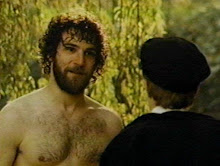Purity of Science in Writing
 Doesn't it make you feel good that there are millions of scientists in the world that are seeking the vital knowledge to help the human race survive and progress? That there are whole hordes of benificent individuals studying the eyeball in order to sooth your glaucoma, that are refining kettle elements for the quickest cups of tea with the minimum fuss? I know you do, and thus I would like to quietly encourage all the writers reading this, that you should become one with this positive life-force in the realm of your own PURE SCIENTIFIC WRITING.
Doesn't it make you feel good that there are millions of scientists in the world that are seeking the vital knowledge to help the human race survive and progress? That there are whole hordes of benificent individuals studying the eyeball in order to sooth your glaucoma, that are refining kettle elements for the quickest cups of tea with the minimum fuss? I know you do, and thus I would like to quietly encourage all the writers reading this, that you should become one with this positive life-force in the realm of your own PURE SCIENTIFIC WRITING.This may seem almost a contradiction to you- surely science and art are mutually exclusive? But if you thought this you would be a wrong and sorry specimen! For thousands of years, the two were not thought of as distinct. For example Aristotle wrote both a Physics AND a Poetics, and crazy old Goethe also wrote scientific treatises on colour, along with his better known poetical and dramatic bonkery.
There are some simple steps that you can seek to achieve immediately-
1. Think of your writing as a scientific tool- a scalpel or a laser perhaps- probing layers, splitting things, seeing through.
2. Remember that anything that is useful scientifically must be able to be repeated using the same parameters and then must achieve the same results.
3. You should structure even a sonnet in the following form- hypothesis, method, results, conclusion.
4. You must find a community that will understand, appreciate and contextualise your efforts positively- psychiatry for example.
5. Include in every story or poem a man-made object, and investigate its uses and abuses. It is obvious to all that man must refine his technology if he is to survive even this century!
Following these five rules to begin with, you will start to achieve a vision and reception in your writing to die for! You will become more fulfilled as you realise your utility, and you will also be satisying your creative urges! Please find more explication, and please buy the book that these five rules are excerpted from at www.scienceforlife.com.
Thank you for listening, and remember that one day there may be only one human left in the world, facing utter extinction. Surely you want to give this guy or gal the best chance? If you must create, create wisely.


<< Home